Lisbon Triennale connects architecture to culture through classification
The fifth Lisbon Triennale promises five exhibitions, 12 special projects and plenty of architectural plans to get lost in. Rich in historical inquiry and appreciation, materials and layers, it confirms the power of architecture within culture, and suggests how classification of the past can play a powerful role in shaping the future of architecture.
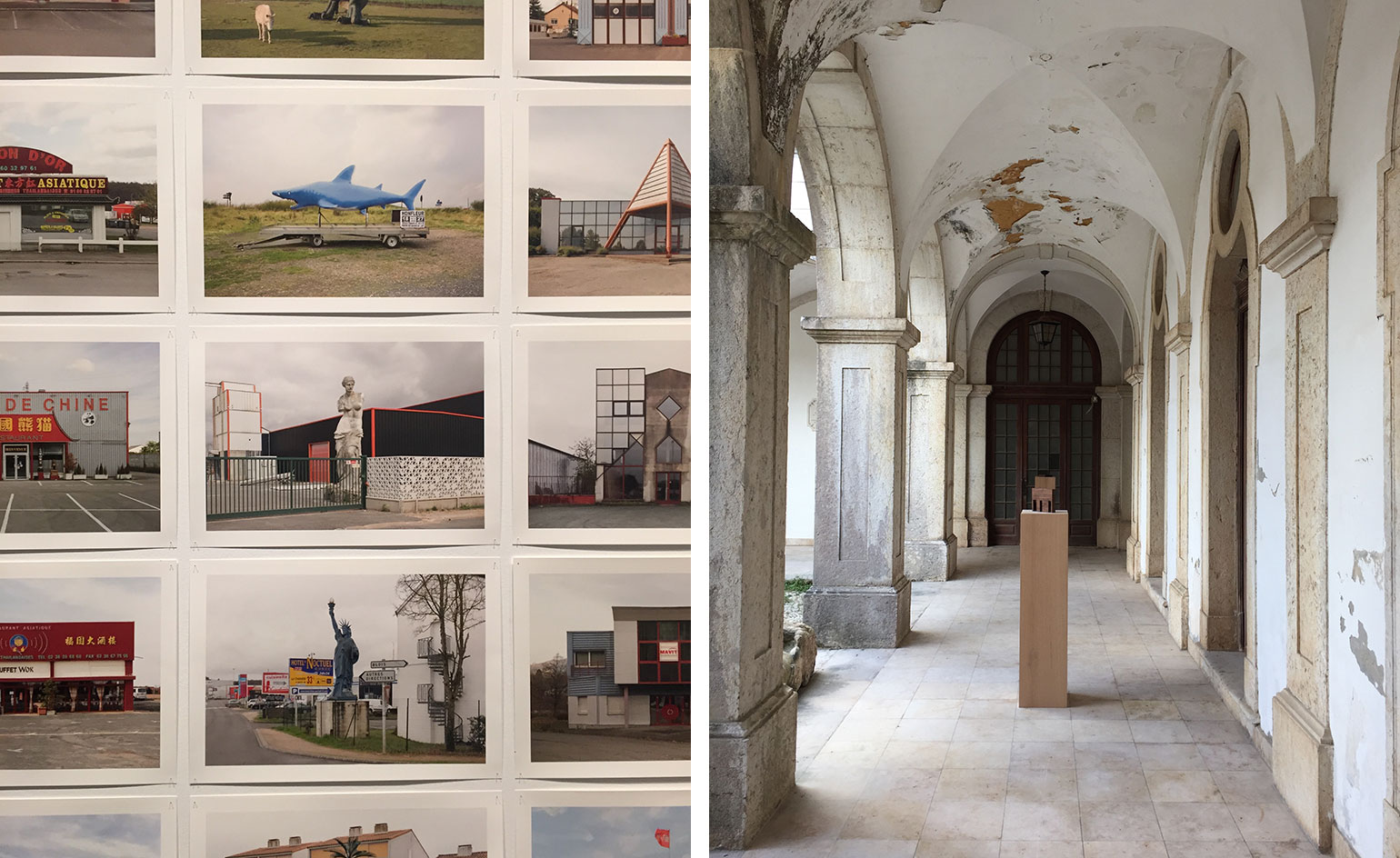
Titled ‘The Poetics of Reason’ and curated by Éric Lapierre, the fifth edition of the Lisbon Triennale claims that while poetics and reason may seem paradoxical, architecture is the discipline that harnesses them both. ‘Architecture is the art of giving a relevant form to a building,’ says Lapierre, architect and teacher at École d'Architecture Marne-la-Vallée Paris Est and École Polytechnique Fédérale de Lausanne.
Rather than starting with a kernel of an idea, and throwing the Triennale open to a selection of international architects to respond, Lapierre’s exhibition ‘The Economy of Means’ is more of a manifesto. ‘Form is highly serious,’ he says. ‘Architecture should be rational, logical and understandable by everyone. Form is not private – it has the possibility of transforming the work of architects into something collective.’ Architecture holds a responsibility to resources – but not just material resources, also cultural and social resources. How can architecture communicate precisely? How can architects make walls and ceilings talk? Here is the economy, he says.
What interests Lapierre is the history of architecture as a system of knowledge, and the origins of this. The exhibition is therefore designed as a matrix ‘from which we can create an infinity of solutions’. (Lapierre follows a mantra of ‘reinvention, but not from scratch.’) So to find the DNA of a good building, our curator starts with plans and types – from photographer Eric Tabuchi’s Atlas des Regions Naturelles, to Pierre le Muet’s 17th century manual on how to build on a small plot to a survey of regional Portuguese architecture.
Classification is a means to rationalising culture. Somewhat like walking through an architecture lesson, each room addresses a new area of architecture. In one room plans of collective spaces such as the Pantheon, Hagia Sophia and Crown Hall Chicago line the floors and float on panels above. While in another, a history of small spaces unfolds featuring Kazuyo Sejima’s House in a Plum Grove, John Soane’s Dairy for Lady Craven and Charlotte Perriand’s minimum dwelling plans.
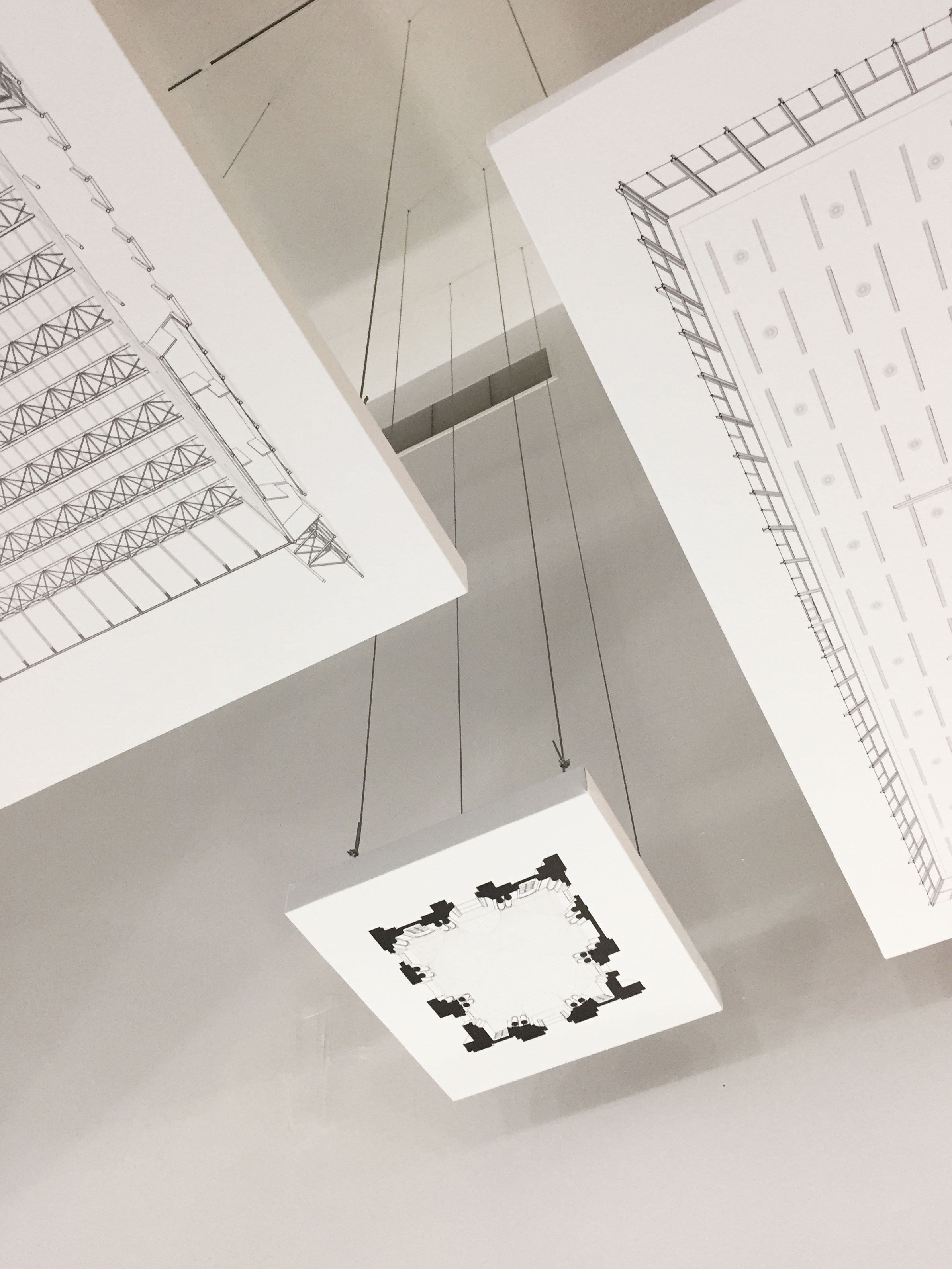
Hanging architectural plans at ’The Economy of Means’ exhibition
From this opening manifesto, a series of four further exhibitions spiral. Another history lesson unfolds at Garagem Sul in Sébastien Marot’s exhibition on agriculture, architecture and urbanism. The professor at École d'Architecture Paris Est presents a timeline of environmental history, a deck of 42 cards showing important images and ideas of permaculture, and four possible future scenarios. Considering industrialisation of the 20th century, he says, urbanisation seems both inevitable and impossible. His statement strikes a powerful chord, and the exhibition, aims to provide some tools for rethinking.
Curators Tristan Chadney and Laurent Esmilaire consider a tighter, yet broader, edit of case studies – from Brunelleschi to Architecten De Vylder Vinck Taillieu – in their exhibition ‘Natural beauty’ that explores the harmony of construction. Their lens is a poetic one, framing buildings with drawing and photography, and a reproduction of a delicate string model that Gaudi used for measuring the load-bearing vaults of the Sagrada Familia.
Elsewhere in the city, at Culturgest, the foundation of Caixa Geral de Depósito, ‘ornament’ is collected and classified by Giovanni Piovene and Ambra Fabi of Pivene Fabi. This time, it’s in three dimensions. Within the context of modernism, excerpts of mouldings ‘the smallest atom of ornament’, columns and patterns from architecture are curated within a sweepingly minimal scenography by Richard Venlet. As part of the show, Sam Jacob and Priya Khanchandani commissioned contemporary responses to Owen Jones’ 1856 book The Grammar of Ornament, seeking to decolonise his theories on pattern. Another treat is the restoration of Aldo Rossi’s film Ornament and crime from 1973 – a film of many films showing monuments of his personal memory.
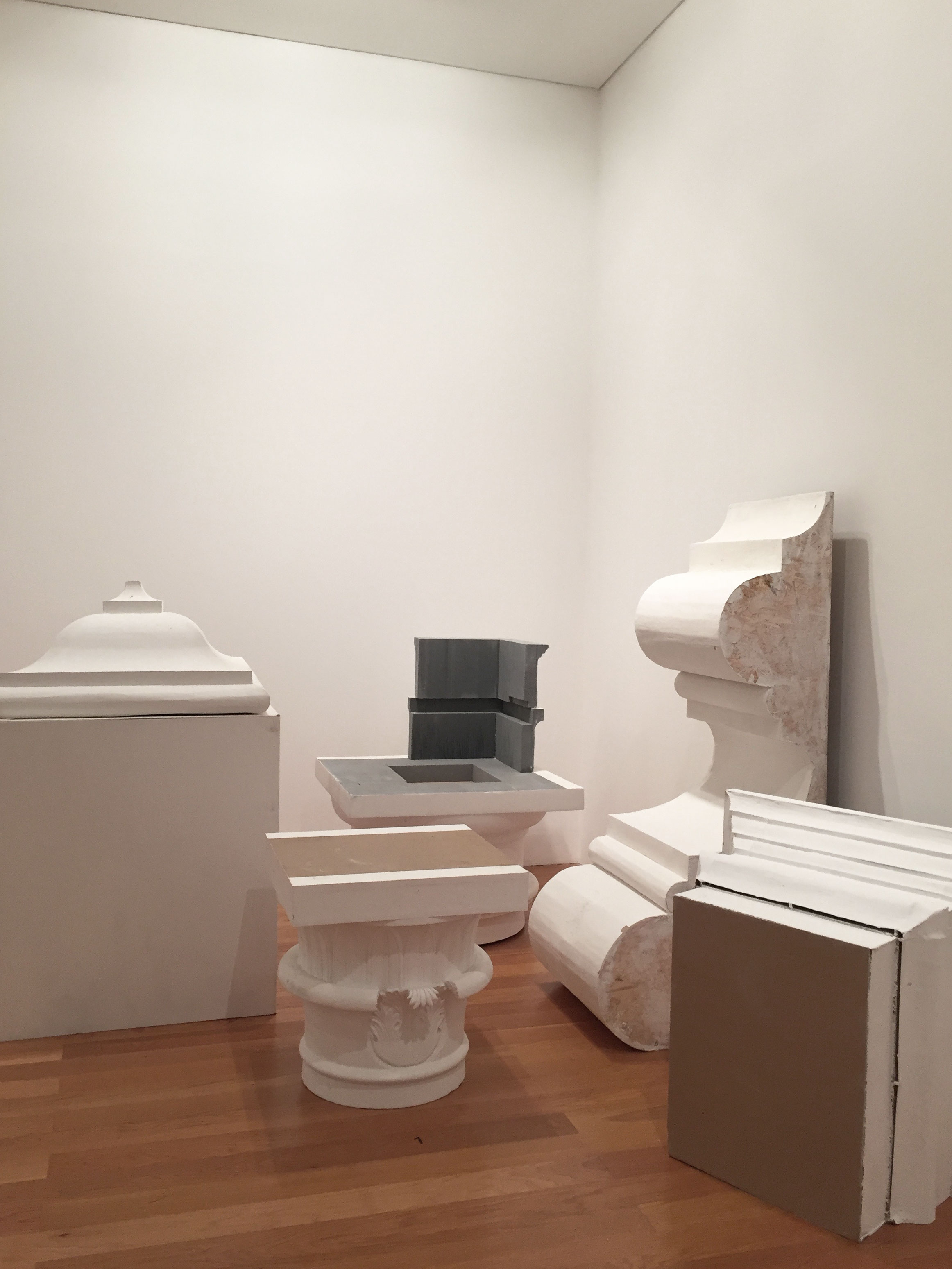
Prototypes of ornament in the exhibition ’Ornament’
Mariabruna Fabrizi and Fosco Lucarelli of Microcities and Socks-studio enter another dimension altogether with their exhibition ‘Inner Space’, which explores imagination. Here you’ll find something new and something unexpected for sure – from Hokusai Katsushika’s volumes of themed illustrations; Julien Rodriguez’s spatial memory maps; Valerio Oligati’s collection of pictures ‘Autobiography Iconography’; Isabel Seliger’s architectural comic strips; or Cardboard Computer’s magical realist adventure game in five acts. Here, imagination is a territory to be ‘experienced, crossed and even inhabited’.
The power of a triennial, or biennial, is its ability to reflect on the present – the reoccurring format is stable enough to be responsive to contemporary practice. Some exhibitions are better than others at applying their historical enquiries to the enquiries of the present. The most successful exhibitions align diverse lenses in unexpected ways – historical, side by side with contemporary. (If the key to the future solutions is located in the past, then we certainly haven’t found it yet, but maybe there is a code there waiting to be discovered?)
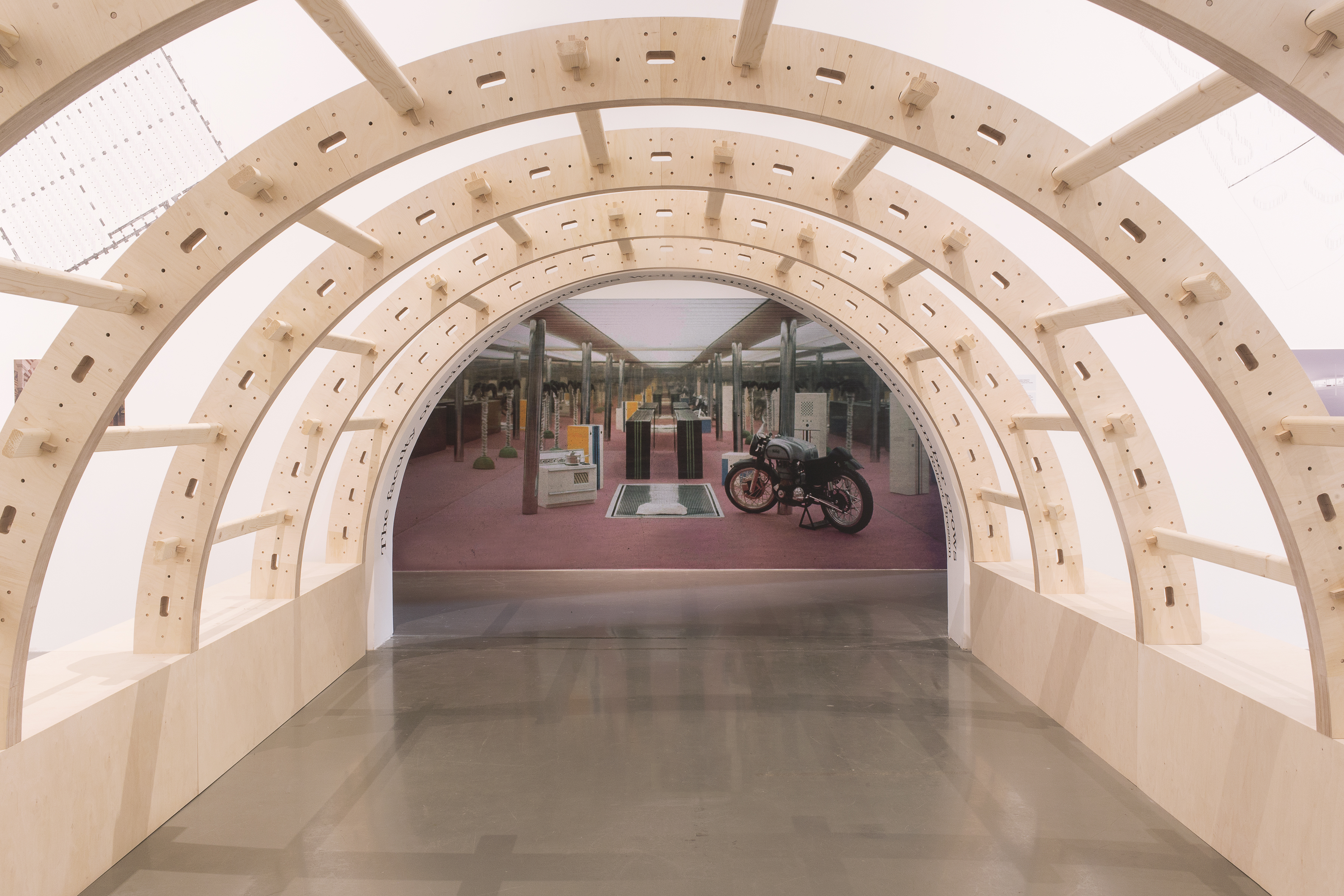
Economy of Means exhibition.
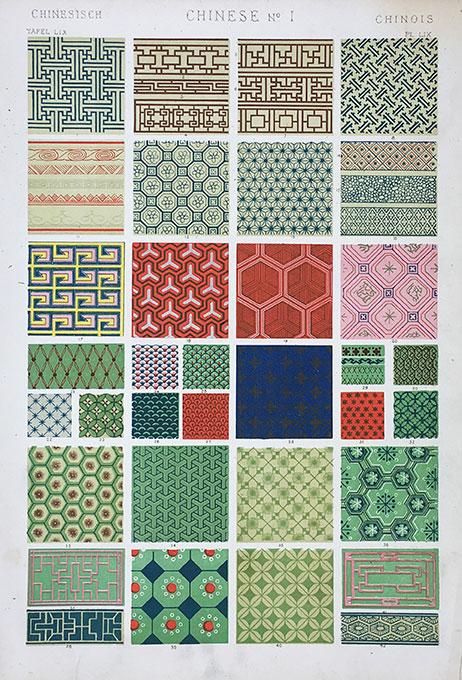
Owen Jones’ Chinese patterns in the 1856 book The Grammar of Ornament. Sam Jacobs and Priya Khanchandani commissioned contemporary responses to decolonise the patterns.
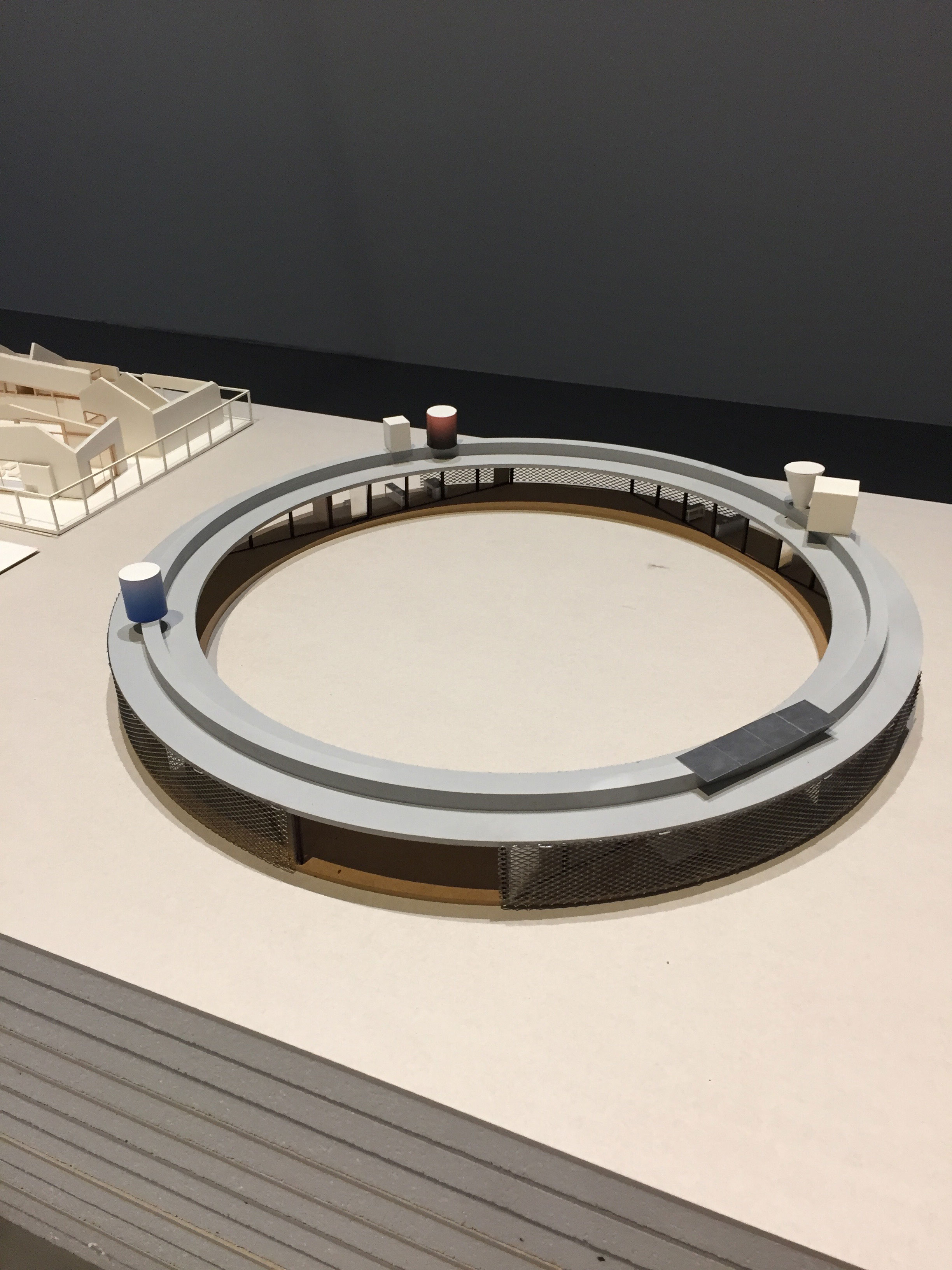
OKGDVS Solo House model, featured in the ‘Economy of Means’ exhibition
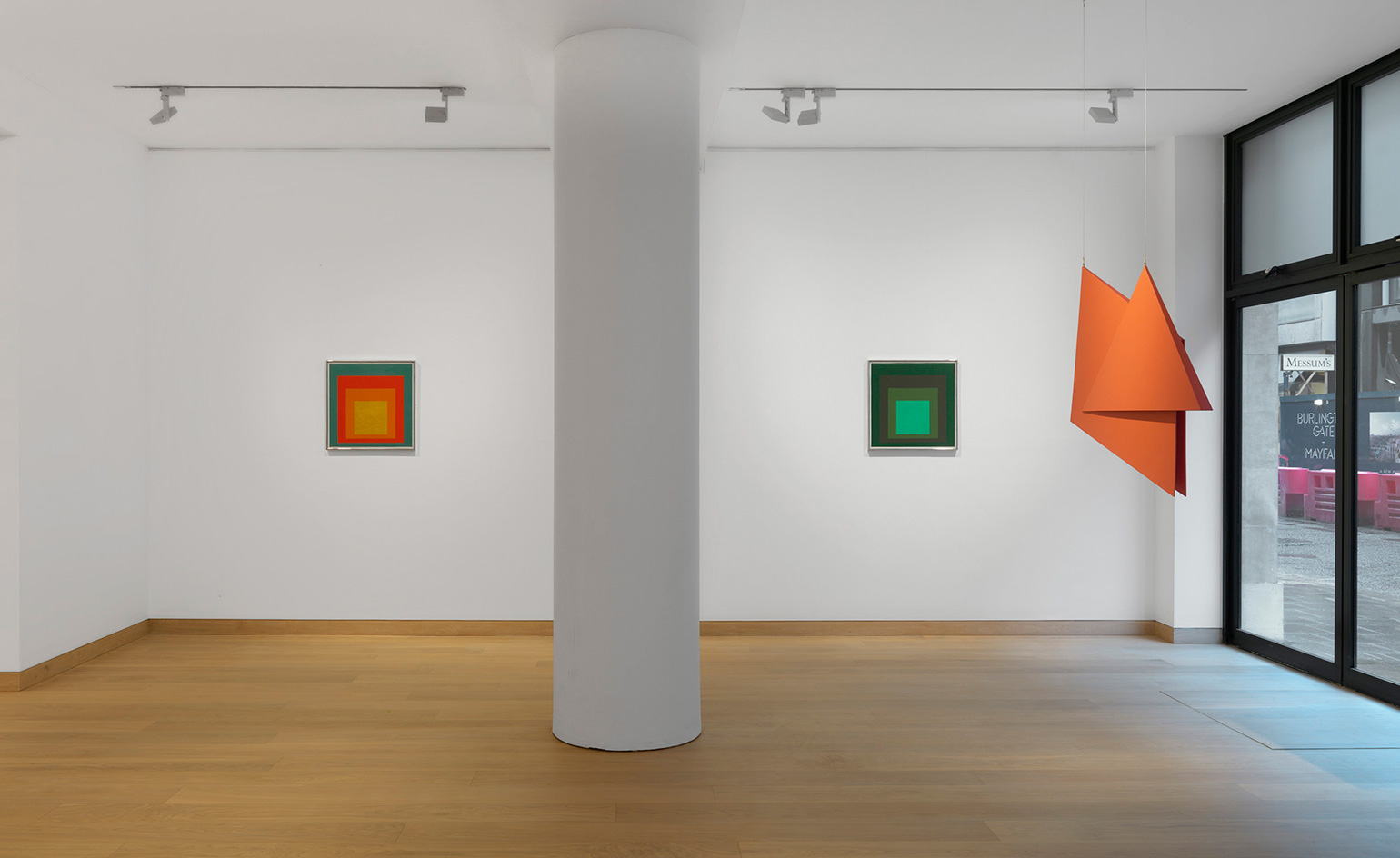
Book covers featured in the ‘Agriculture and architecture: taking the country’s side’
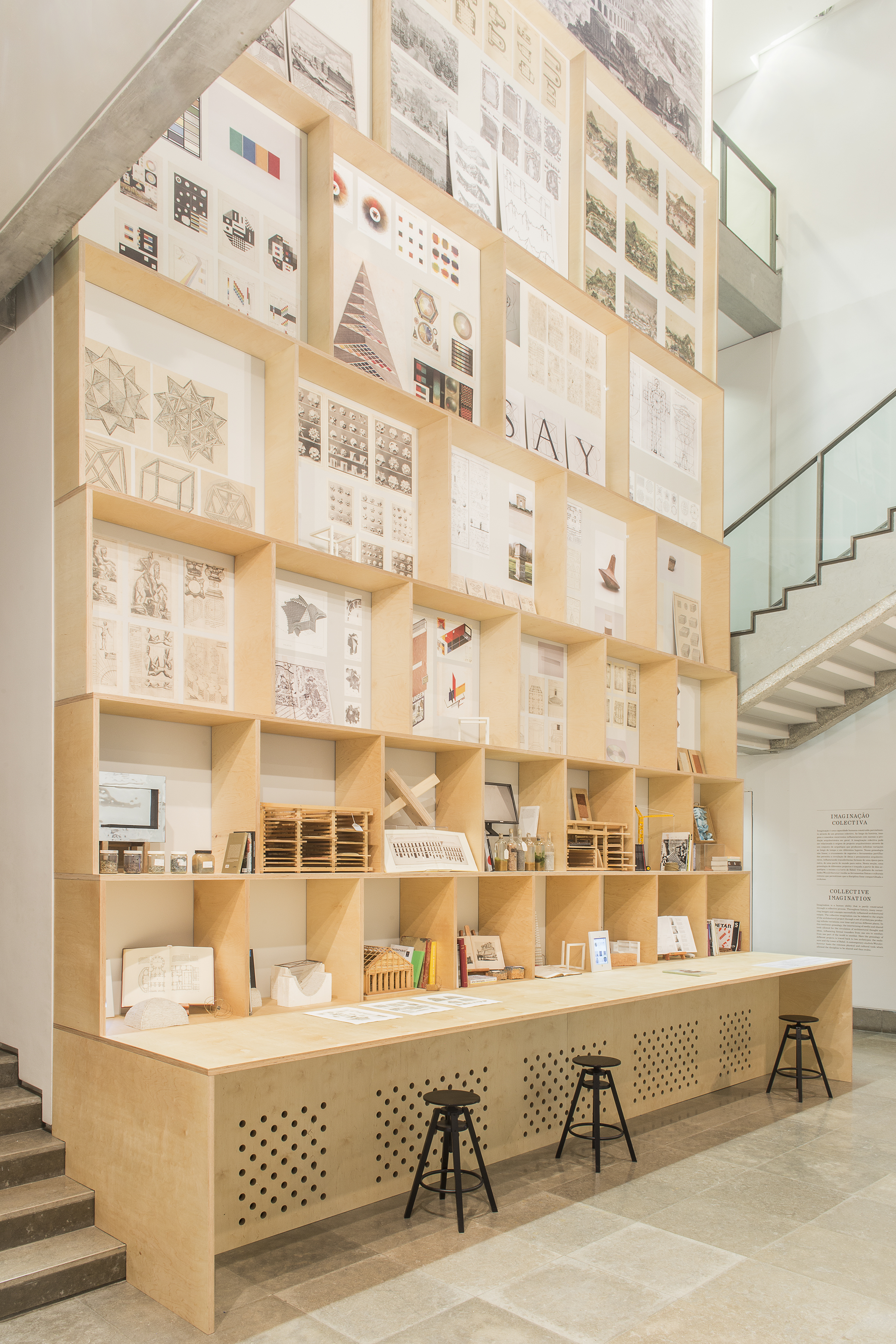
Inner Space exhibition.
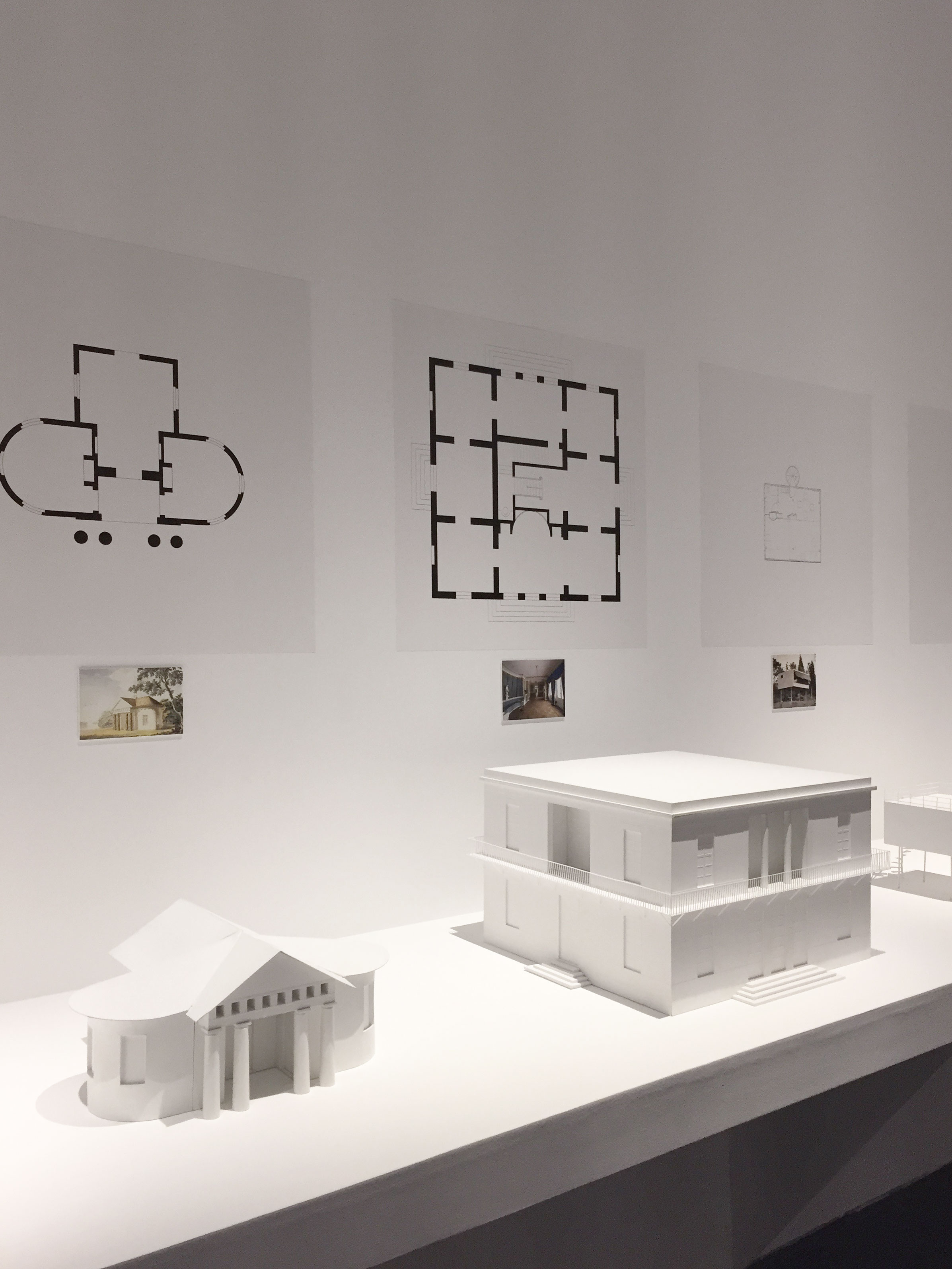
Installation at the ‘Economy of Means’ exhibition
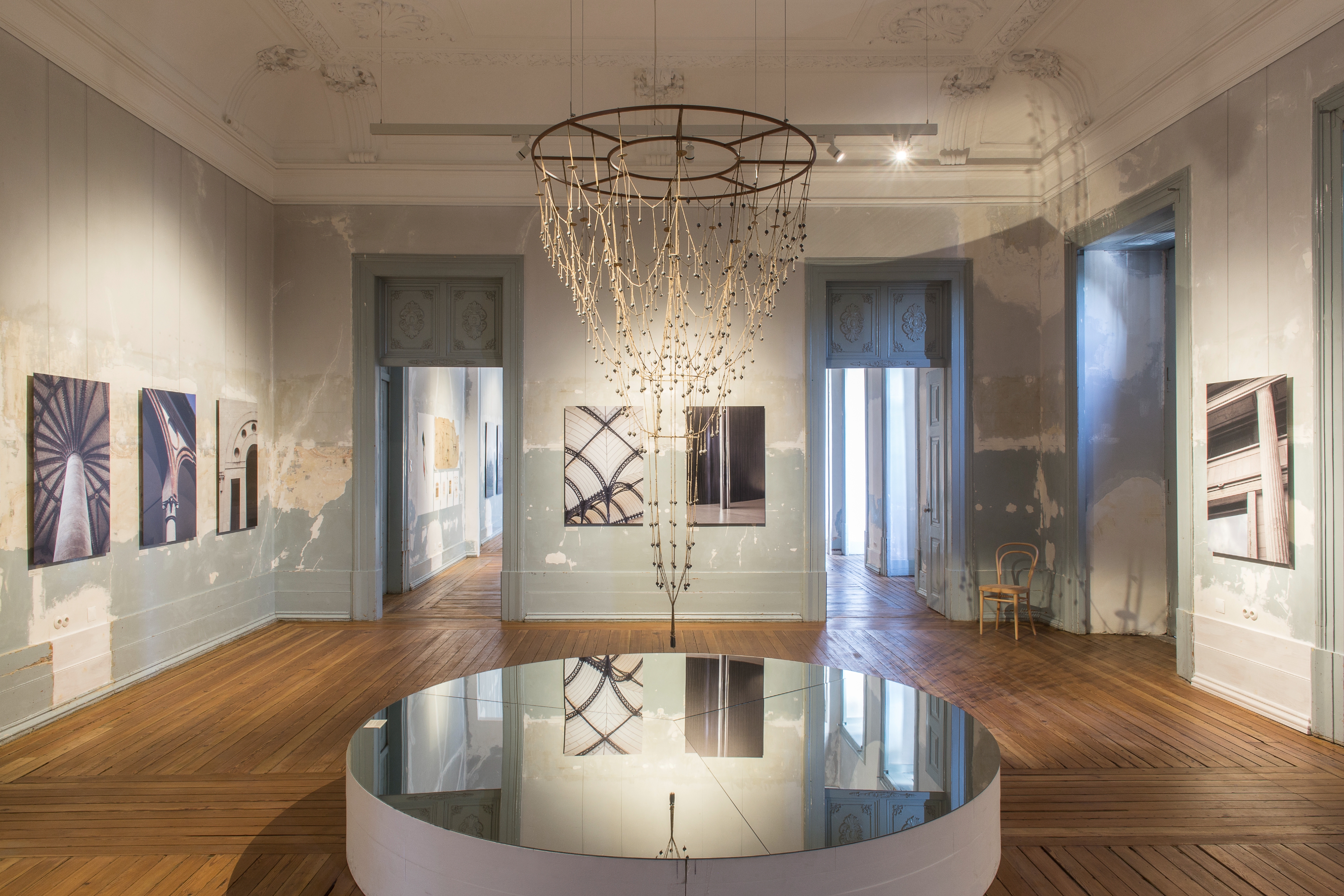
Natural Beauty exhibition.
INFORMATION
Wallpaper* Newsletter
Receive our daily digest of inspiration, escapism and design stories from around the world direct to your inbox.
Harriet Thorpe is a writer, journalist and editor covering architecture, design and culture, with particular interest in sustainability, 20th-century architecture and community. After studying History of Art at the School of Oriental and African Studies (SOAS) and Journalism at City University in London, she developed her interest in architecture working at Wallpaper* magazine and today contributes to Wallpaper*, The World of Interiors and Icon magazine, amongst other titles. She is author of The Sustainable City (2022, Hoxton Mini Press), a book about sustainable architecture in London, and the Modern Cambridge Map (2023, Blue Crow Media), a map of 20th-century architecture in Cambridge, the city where she grew up.
-
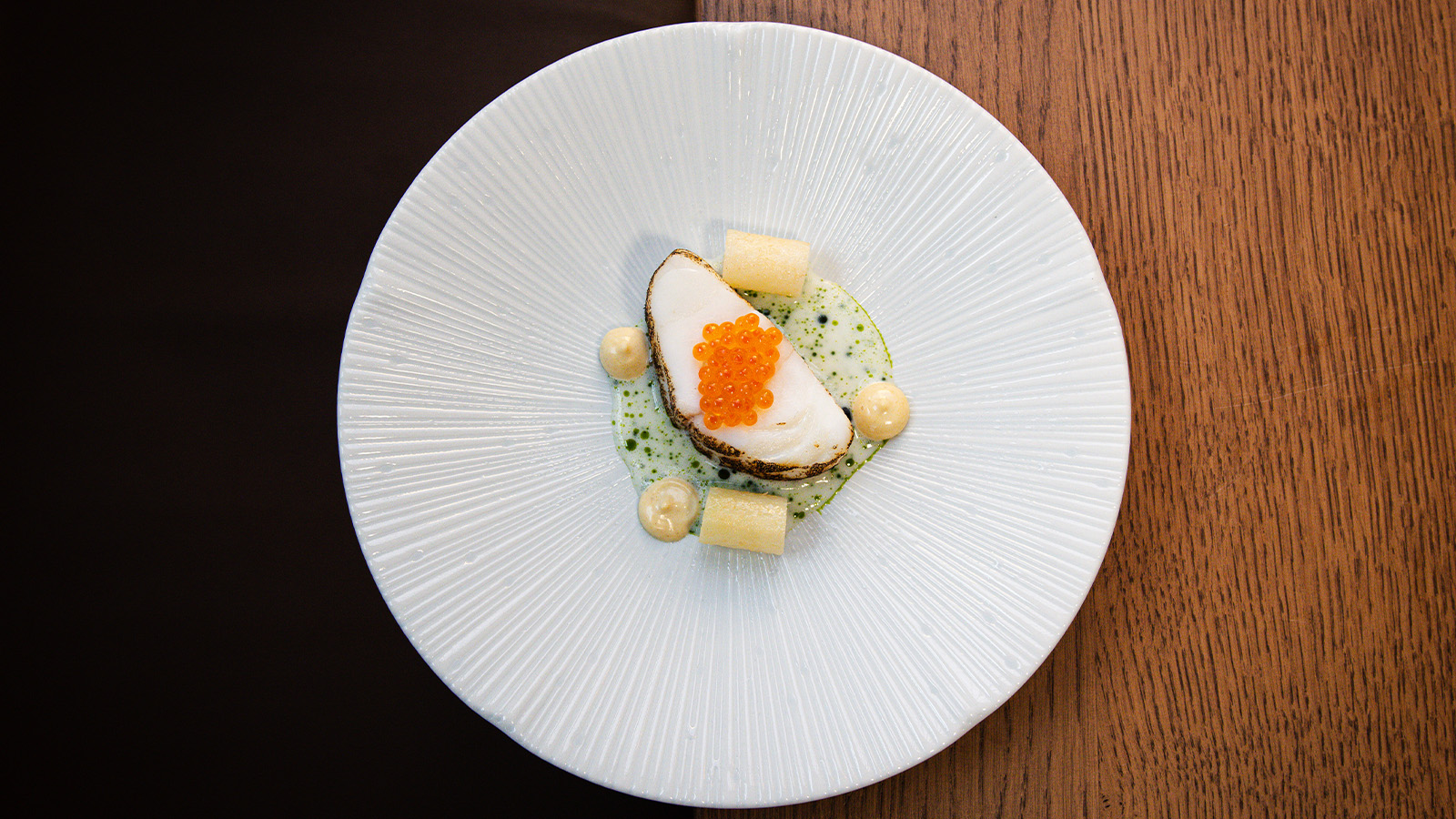 In Wales, Michelin-starred Gorse celebrates the country’s abundant larder
In Wales, Michelin-starred Gorse celebrates the country’s abundant larderGorse is the first Michelin-starred restaurant in Cardiff, putting Welsh cuisine on the map. We speak with chef and founder Tom Waters about the importance of keeping culinary traditions alive
By Tianna Williams
-
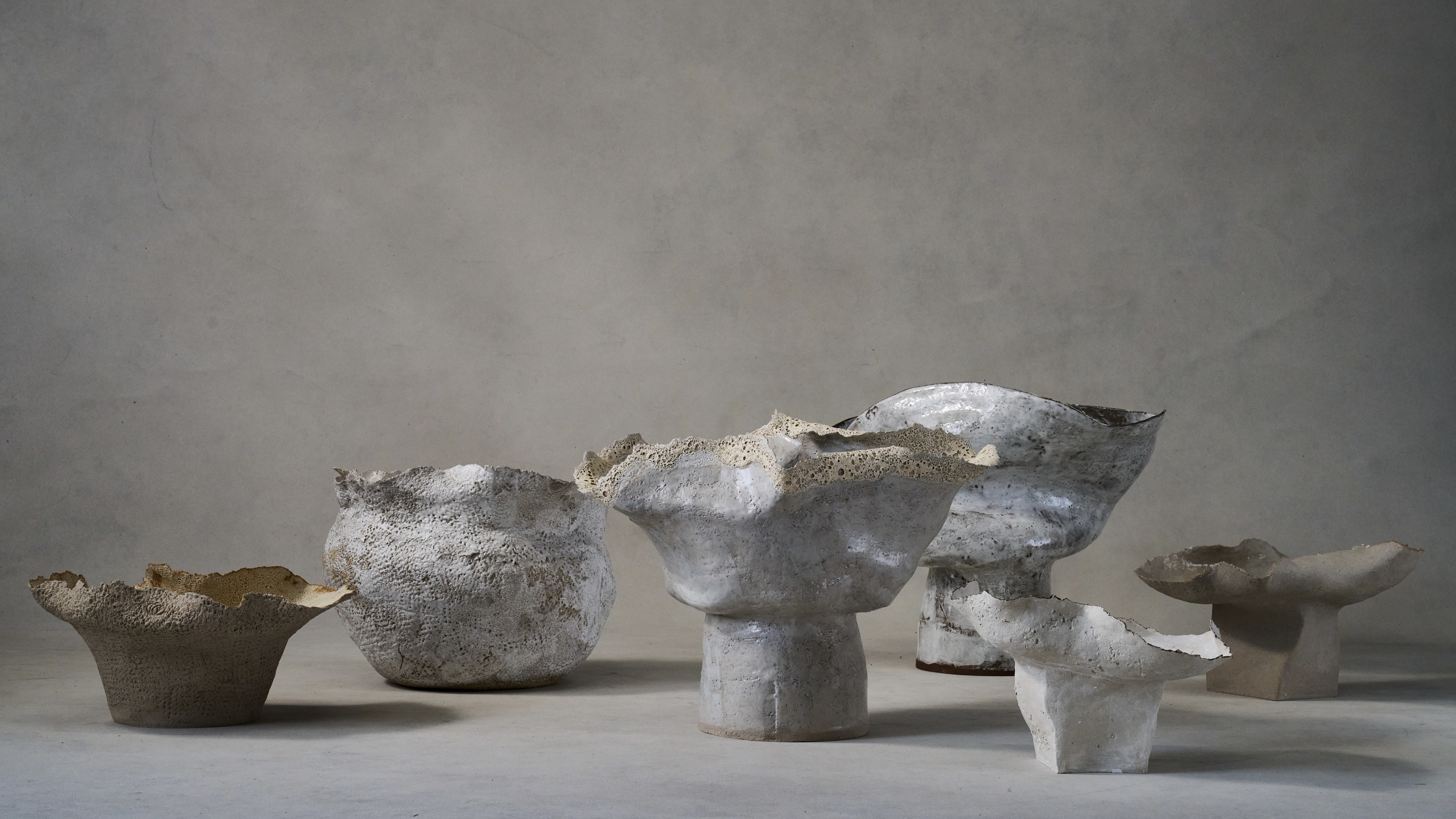 Ludmilla Balkis’ organic, earthy ceramics embody the Basque countryside
Ludmilla Balkis’ organic, earthy ceramics embody the Basque countrysideThe sculptor-ceramicist presents a series inspired by and created from found natural objects in a New York exhibition
By Anna Solomon
-
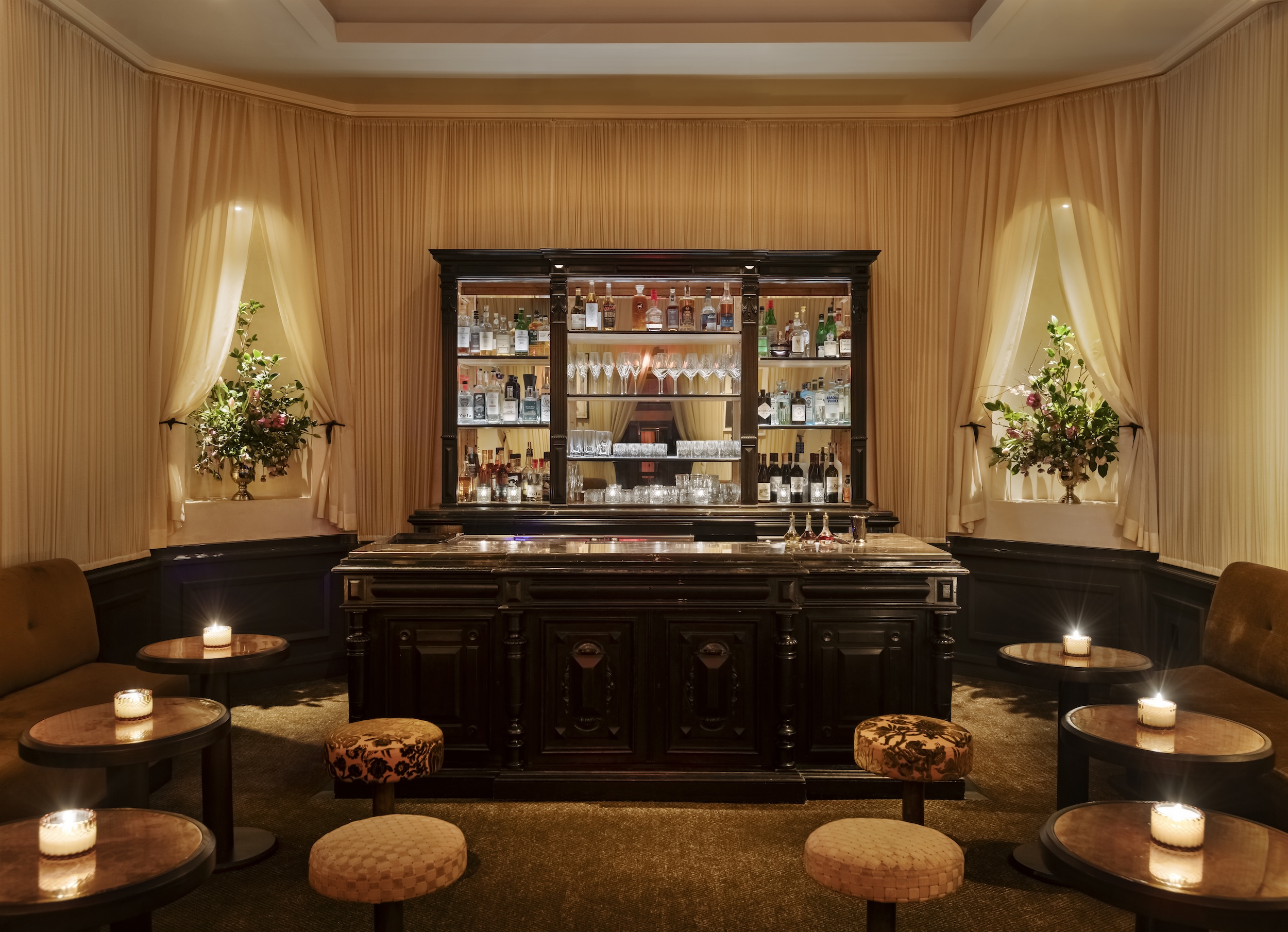 At this secret NYC hangout, the drinks are strong and the vibes are stronger
At this secret NYC hangout, the drinks are strong and the vibes are strongerFor People's bar, Workstead serves up a good time
By Anna Fixsen
-
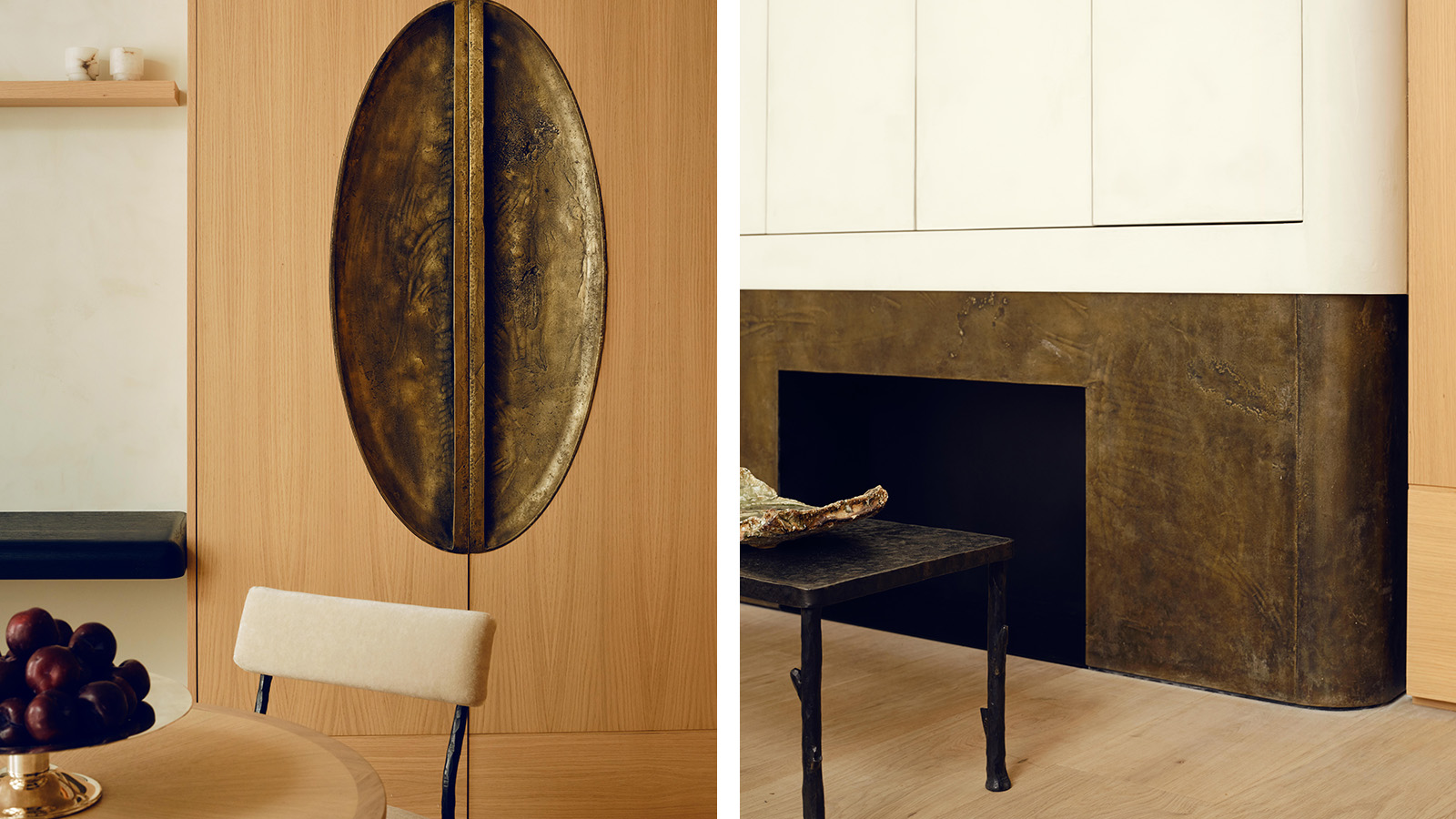 Stay in a Parisian apartment which artfully balances minimalism and warmth
Stay in a Parisian apartment which artfully balances minimalism and warmthTour this pied-a-terre in the 7th arrondissement, designed by Valeriane Lazard
By Ellie Stathaki
-
 Marta Pan and André Wogenscky's legacy is alive through their modernist home in France
Marta Pan and André Wogenscky's legacy is alive through their modernist home in FranceFondation Marta Pan – André Wogenscky: how a creative couple’s sculptural masterpiece in France keeps its authors’ legacy alive
By Adam Štěch
-
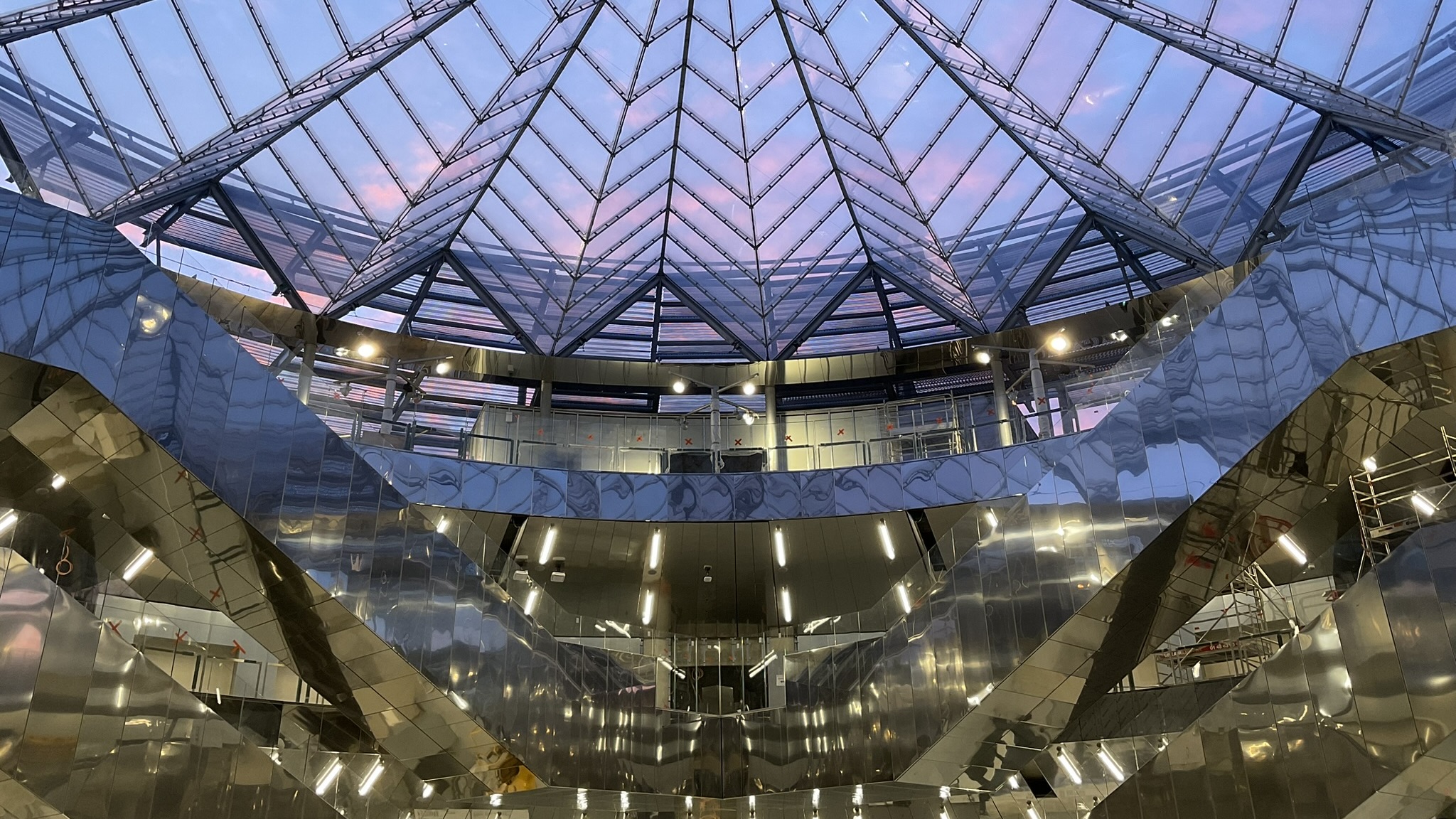 Paris’ architecturally fascinating Villejuif-Gustave Roussy metro station is now open
Paris’ architecturally fascinating Villejuif-Gustave Roussy metro station is now openVillejuif-Gustave Roussy is part of the new Grand Paris Express, a transport network that will raise the architectural profile of the Paris suburbs
By Anna Solomon
-
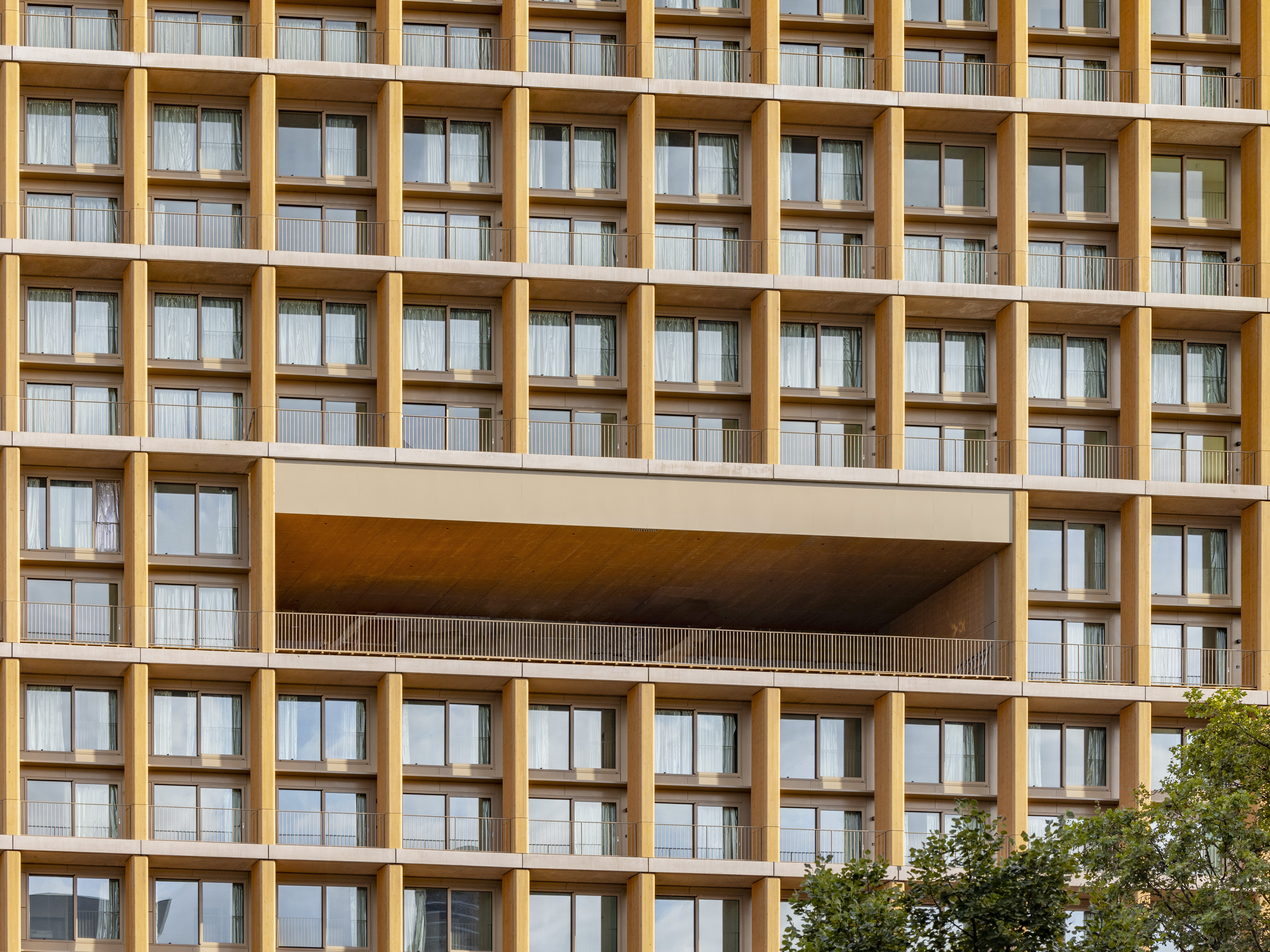 Explore wood architecture, Paris' new timber tower and how to make sustainable construction look ‘iconic’
Explore wood architecture, Paris' new timber tower and how to make sustainable construction look ‘iconic’A new timber tower brings wood architecture into sharp focus in Paris and highlights ways to craft buildings that are both sustainable and look great: we spoke to project architects LAN, and explore the genre through further examples
By Amy Serafin
-
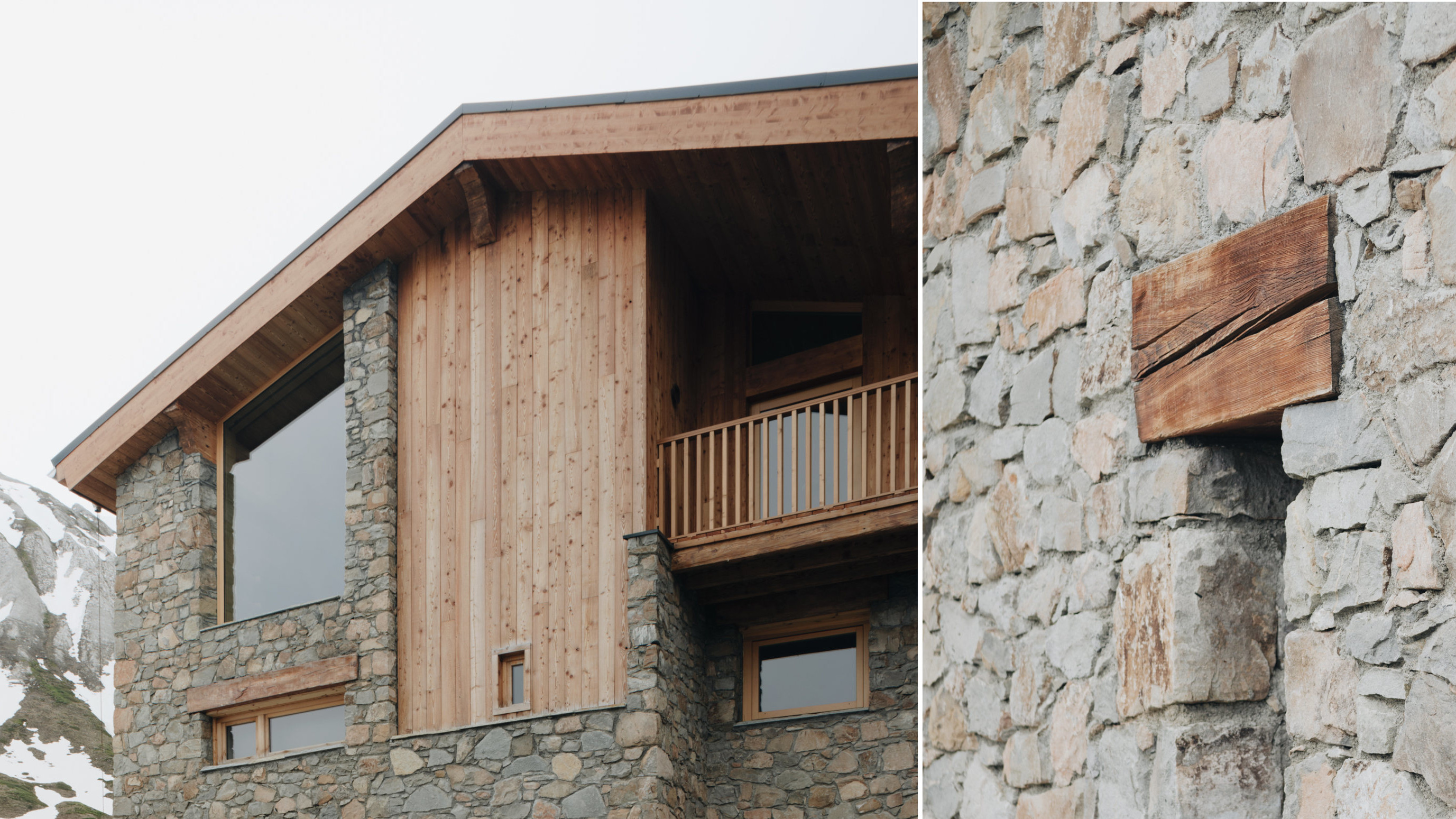 A transformed chalet by Studio Razavi redesigns an existing structure into a well-crafted Alpine retreat
A transformed chalet by Studio Razavi redesigns an existing structure into a well-crafted Alpine retreatThis overhauled chalet in the French Alps blends traditional forms with a highly bespoke interior
By Jonathan Bell
-
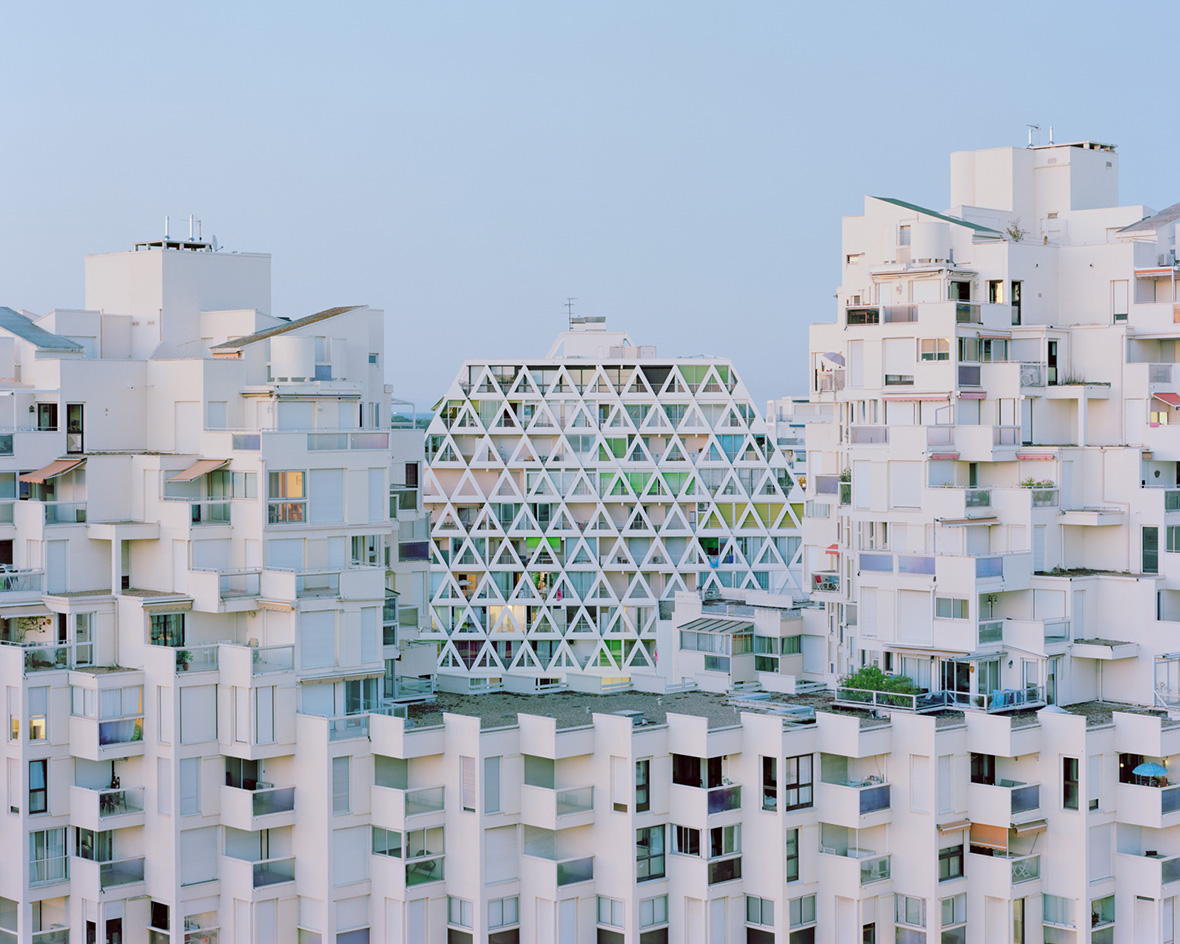 La Grande Motte: touring the 20th-century modernist dream of a French paradise resort
La Grande Motte: touring the 20th-century modernist dream of a French paradise resortLa Grande Motte and its utopian modernist dreams, as seen through the lens of photographers Laurent Kronental and Charly Broyez, who spectacularly captured the 20th-century resort community in the south of France
By Ellie Stathaki
-
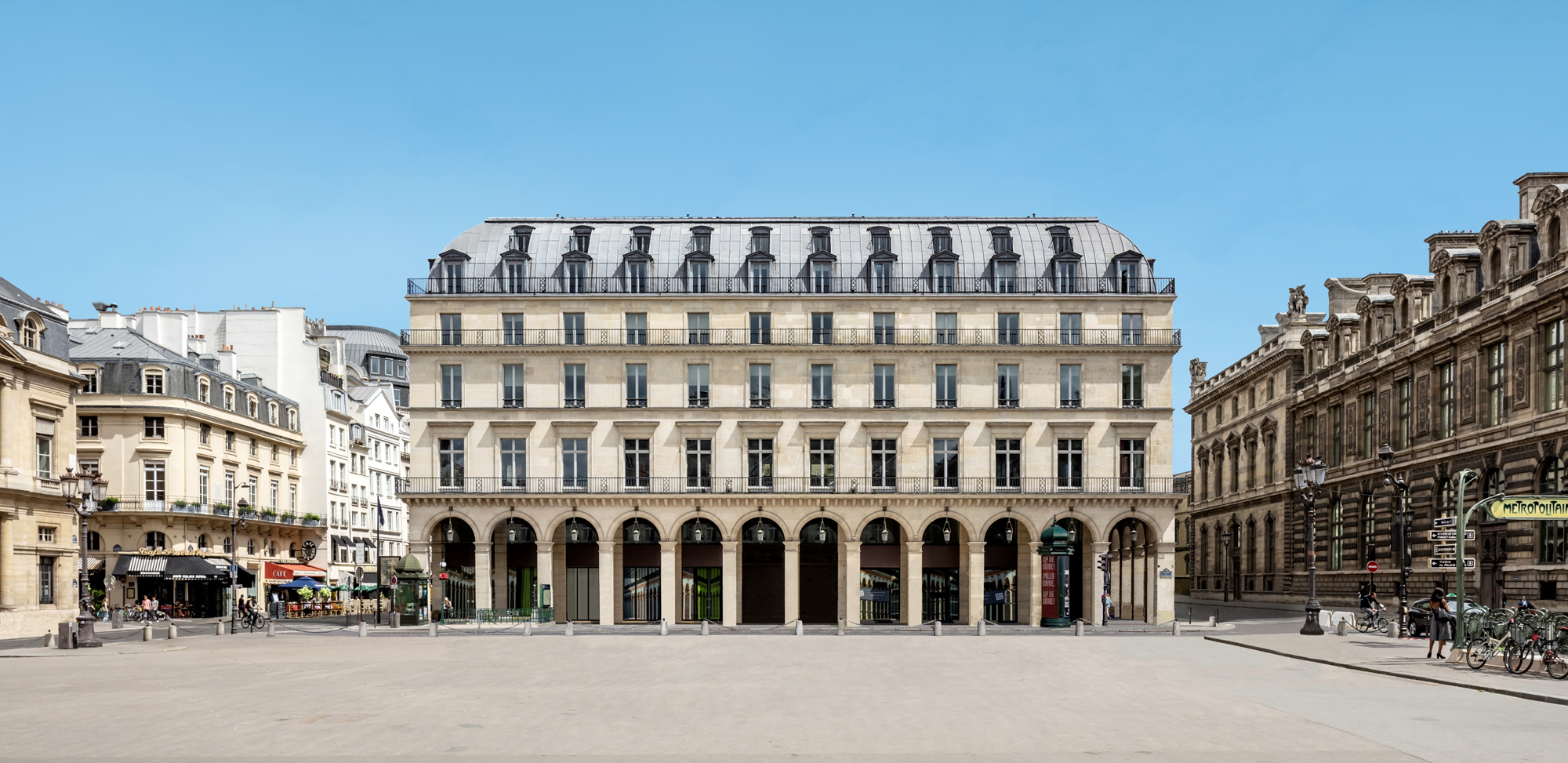 Fondation Cartier pour l’art contemporain unveils plans for new Jean Nouvel building
Fondation Cartier pour l’art contemporain unveils plans for new Jean Nouvel buildingFondation Cartier pour l’art contemporain has plans for a new building in Paris, working with architect Jean Nouvel
By Ellie Stathaki
-
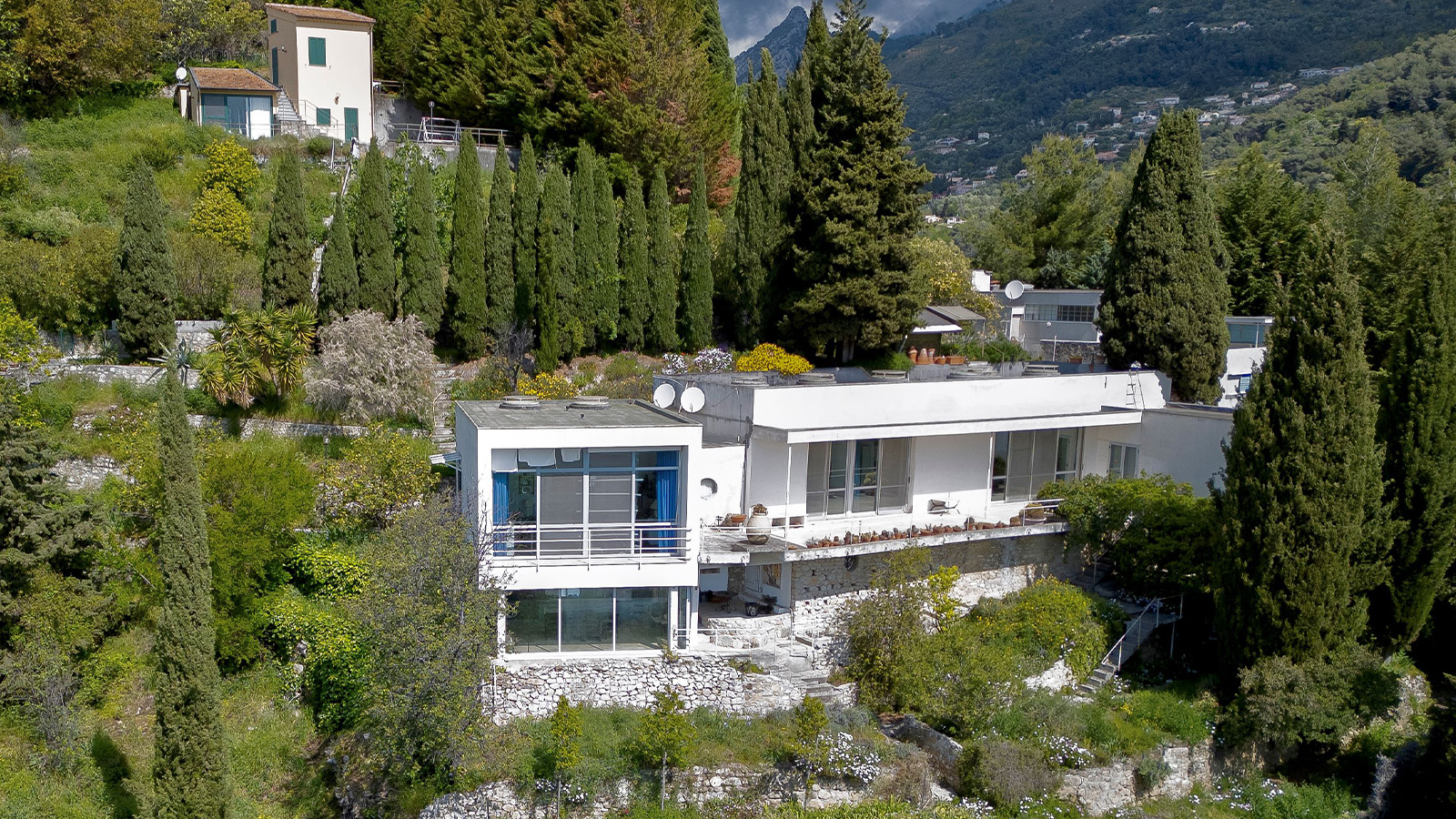 Discover Tempe à Pailla, a lesser-known Eileen Gray gem nestled in the French Riviera
Discover Tempe à Pailla, a lesser-known Eileen Gray gem nestled in the French RivieraTempe à Pailla is a modernist villa in the French Riviera brimming with history, originally designed by architect Eileen Gray and extended by late British painter Graham Sutherland
By Tianna Williams